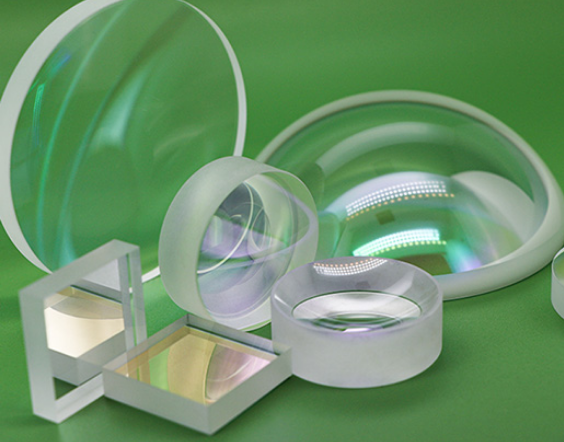Spherical vs Aspherical Lenses: How They're Used in Imaging Applications
Optical Lenses are often categorized by their shape. Two common surface shapes are spherical and aspherical. Each offers unique characteristics that make it suitable for different use cases.
What are Spherical and Aspheric Lenses?
Traditional spherical lenses feature a single curvature across the front surface, resembling a cricket ball. In contrast, aspheric lenses have a more intricate front surface with multiple flatter curves that transition in shape from the center to the outer edge of the lens.
Spherical Lenses
Spherical lenses are so named because the surface is a section of a sphere. Thus, the radius of curvature is constant across the entire lens.
Spherical lenses cause light to either converge (from a convex surface) or diverge (from a concave surface), with the degree of focusing power directly related to the glass's index of refraction.
The primary advantages of using spherical lenses in optical systems include their simpler surface design and lower manufacturing cost. Spherical lenses can be produced using mechanical apparatus rather than computer-controlled equipment. Depending on the size and quantity required, spherical lenses can often be polished in batches, saving significant time during the polishing process setup.
Spherical lenses can be further classified based on their shapes. Plano-convex and plano-concave lenses feature one flat and one spherical surface. Meniscus lenses have one concave and one convex surface. Lastly, bi-convex or bi-concave lenses possess two spherical sides.
Spherical lenses have been utilized for centuries and are well-suited for various imaging applications across diverse markets. Nearly every modern imaging system, including binoculars, camera lenses, tube lenses, relay lenses, microscope objectives, and more, incorporates at least some spherical lenses.
Spherical lenses are so named because the surface is a section of a sphere. Thus, the radius of curvature is constant across the entire lens.
The design of spherical lenses triggers vision distortion when you look away from the optical centre of the lens in a different direction.
If you are farsighted or have hyperopia, the curve of these lenses will lead to the unwanted magnification of the objects in front of you. Moreover, they can give you a bug-eyed appearance, which many people find unattractive. Conversely, if you are nearsighted, these lenses can make both images and your eyes appear smaller.
Aspheric Lenses
Aspherical lenses are optical lenses characterized by a non-spherical but rotationally symmetric radius of curvature. Unlike spherical lenses, their radius of curvature varies from the center to the edge of the lens.
The deviation from sphericity is often too subtle to be discerned by the naked eye. Specialized optical metrology equipment may be required to determine whether an optical surface is spherical or aspherical. In some cases, the departure from a spherical shape is so significant that it is easily noticeable. Certain aspheric surfaces even exhibit an inflection point or "gull wing" shape, transitioning from convex to concave between the center and edge of the clear aperture.
Utilizing modern optical technology, aspheric lenses feature flatter curves that transition gradually from the center to the edge.
These lenses are thinner compared to spherical lenses and offer a more aesthetically pleasing profile. Their contemporary design minimizes distortion, providing a wider field of view and enhanced peripheral vision. As a result, they are favored in high-quality and expensive cameras. Additionally, they offer a natural appearance to the eyes, maintaining their true size.
Whether you require blue light filter glasses or ready readers, individuals who are farsighted can derive the most benefits from aspheric lenses.
Use in Imaging Applications
Both spherical and aspherical lenses are utilized across a broad spectrum of imaging applications in various industries. They empower engineers, researchers, and scientists to employ equipment—such as advanced microscopes, laser scanners, and other imaging devices—for highly accurate measurements.
Examples of applications where spherical and aspherical lenses are employed include:
1. Fluorescence microscope platforms: These are utilized by researchers to identify and examine specific sections of specimens, such as decoding DNA sequences and imaging individual cells and tissue samples.
2. Cameras and laser-based ophthalmic tools for vision correction: These tools are used by trained clinicians and surgeons to diagnose and treat eye diseases and correct vision.
3. Semiconductor wafer inspection tools: These tools are utilized by computer chip engineers to map defects and probe cards.
4. Industrial laser machine tools: These are used by manufacturing companies to create and inspect products before, during, and after manufacturing.
5. Night vision optics: These are employed by defense and law enforcement personnel to operate under the cover of darkness.



